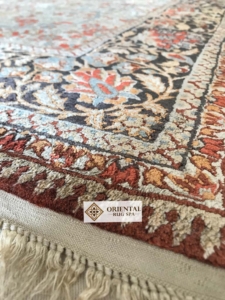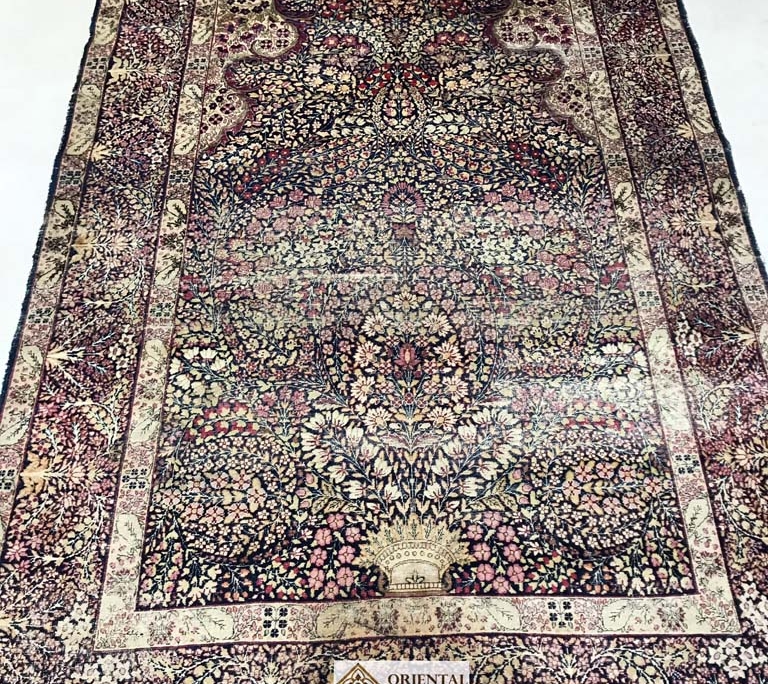Rug Cleaning Bourne End
Oriental Rug Spa offer a specialist Persian, Oriental and Turkish rug cleaning for Bourne End, Buckinghamshire We also offer a rug repair service. If you own a dirty or soiled rug that needs professional cleaning, then why not give us a call on 01276 423 150. We can arrange collection and delivery for you. The rug wash process required can differ from rug to rug, so we offer various methods of rug cleaning, from full immersion washing to dry cleaning. All rug fibres can be cared for – wool, cotton, silk, viscose, rayon. We can carry out a pet stain and odour treatment, moth treatment and apply a fibre protection to resist against soiling and staining. We have extensive experience with cleaning antique rugs and rugs with unstable dyes and offer a rug repair service, including fringes, sides and pile reweaving.
Chinese Silk Rugs

Chinese Silk
Chinese silk rugs have a long and storied history that dates back thousands of years. The art of rug weaving is believed to have originated in ancient China during the Han Dynasty (206 BC–220 AD). Silk, which was considered a luxurious and prized material, was used to create exquisite rugs that became a symbol of wealth and status.
During the Tang Dynasty (618-907 AD), silk production and trade flourished in China. This resulted in the refinement of rug making techniques and the emergence of Chinese silk rugs as prestigious items. These rugs were typically made using the Persian knot, a technique that involves tying knots around the warp threads to create the pile.
Chinese silk rugs gained popularity and recognition in the international market during the Yuan Dynasty (1271-1368 AD). The Mongolian rulers of China actively promoted the silk trade and commissioned exquisite silk rugs to be made for their palaces and temples. These rugs became known as “Dragon Rugs” due to their intricate dragon motifs.
During the Ming Dynasty (1368-1644 AD), rug production shifted from the imperial court to private workshops. The weavers began to incorporate a wider range of designs and patterns, including floral motifs, lotus blossoms, and Chinese calligraphy. Chinese silk rugs during this period became known for their intricate details and delicate craftsmanship.
In the 19th and early 20th centuries, Chinese silk rugs experienced a revival in popularity. Western collectors and buyers developed a fascination for these rugs, creating a demand for their production. To meet this demand, Chinese rug weavers started creating rugs with more diverse designs, including landscapes, animals, and scenes from daily life.
Today, Chinese silk rugs continue to be highly sought after for their artistic beauty and fine craftsmanship. Skilled artisans create them using traditional techniques and motifs, while also incorporating modern elements to cater to changing tastes. They are considered to be collector’s items and are often found in museums and prestigious collections around the world.




















